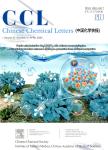Thermal Characterization and Decomposition Kinetics of Free Anthraquinones from Rhubarb
Thermal Characterization and Decomposition Kinetics of Free Anthraquinones from Rhubarb作者机构:College of Bioengineering Tianjin University of Science & Technology Tianjin 300222
出 版 物:《Chinese Chemical Letters》 (中国化学快报(英文版))
年 卷 期:2006年第17卷第5期
页 面:699-702页
核心收录:
学科分类:1008[医学-中药学(可授医学、理学学位)] 1007[医学-药学(可授医学、理学学位)] 1006[医学-中西医结合] 0703[理学-化学] 100602[医学-中西医结合临床] 10[医学]
基 金:The Science and Technology Development Fund of Tientsin Universities(20031210)
主 题:Aloe-emodin chrysophanol physcion thermogravimetry (TG) differential thermoanalysis (DTA) non-isothermal kinetics.
摘 要:The thermal behaviour of aloe-emodin, chrysophanol and physcion and their kinetics have been investigated under non-isothermal conditions by means of differential thermal analysis (DTA) and thermogravimetry (TG). The thermal characteristics have been determined using the DTA and TG-DTG curves. The non-isothermal kinetic data were analyzed by means of the Achar method and the Madhusudanan-Krishnan-Ninan (MKN) method. The possible reaction mechanisms have been investigated by comparing the kinetic parameters. The kinetic equation for aloe-emodin, chrysophanol and physcion can be expressed as dα/dt=Aexp(-E/RT)1/3(1-α)[-In(1-α]2. The activation energy E (kJ mol^-1) of the three free anthraquinones are 78.09, 89.54, and 107.5 and their InA/s^-1 are 22.98, 36.85 and 43.60, respectively.



